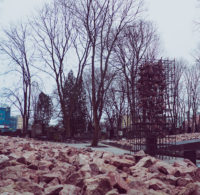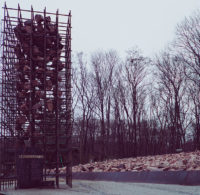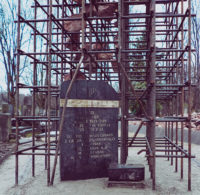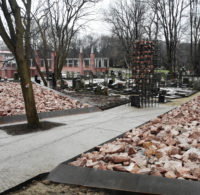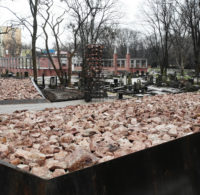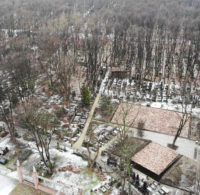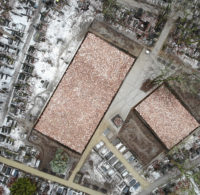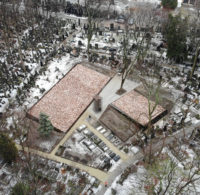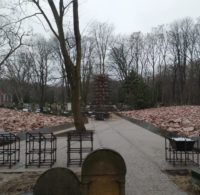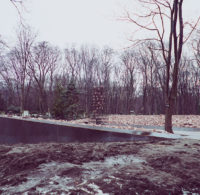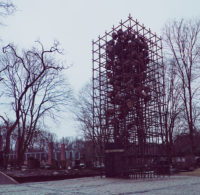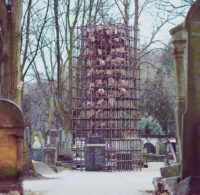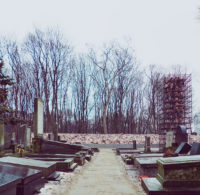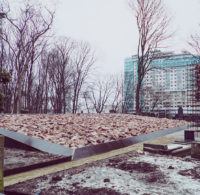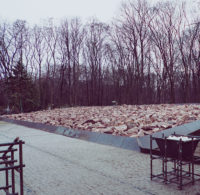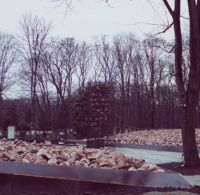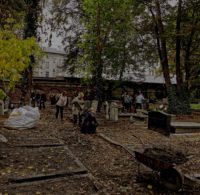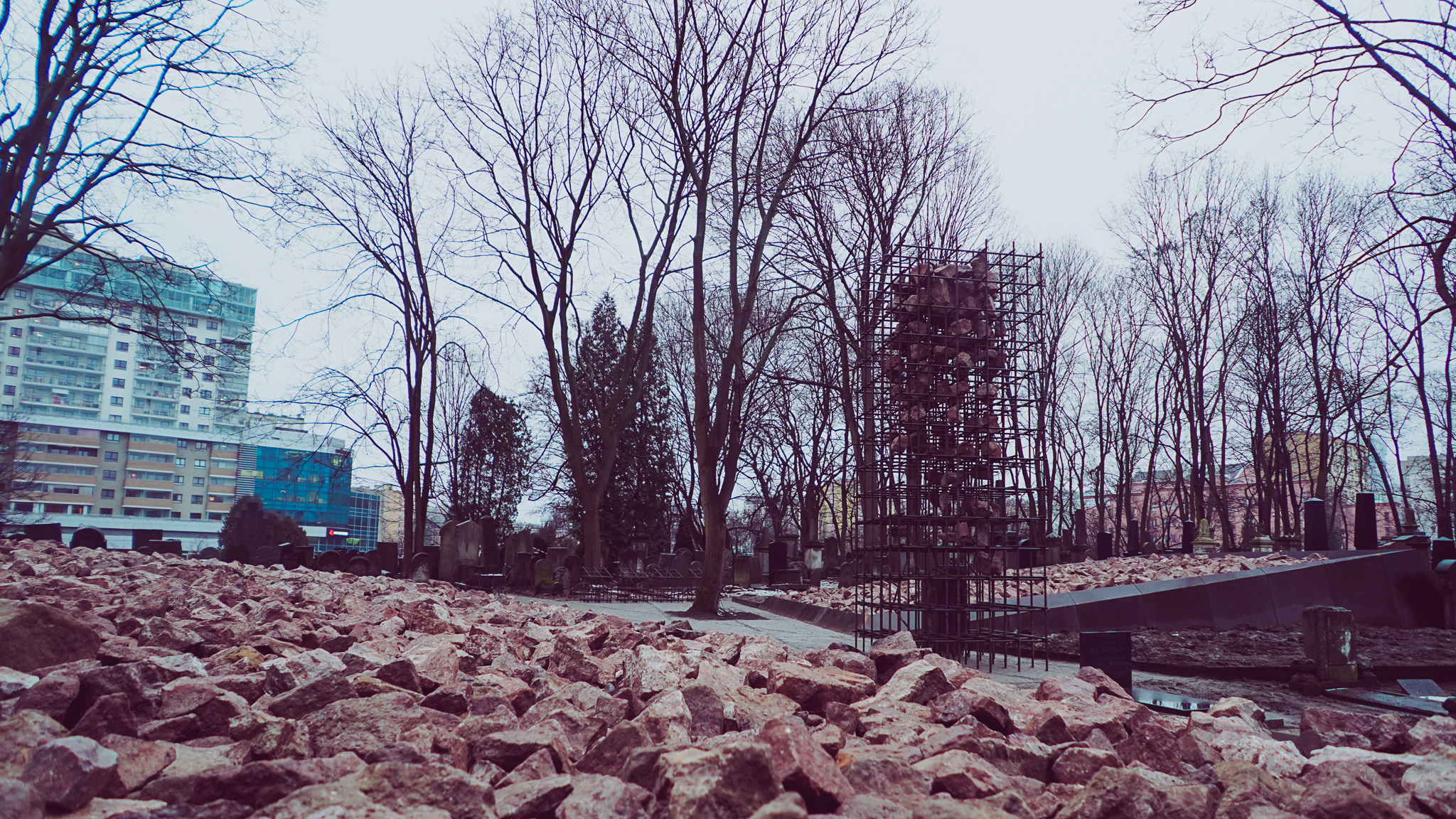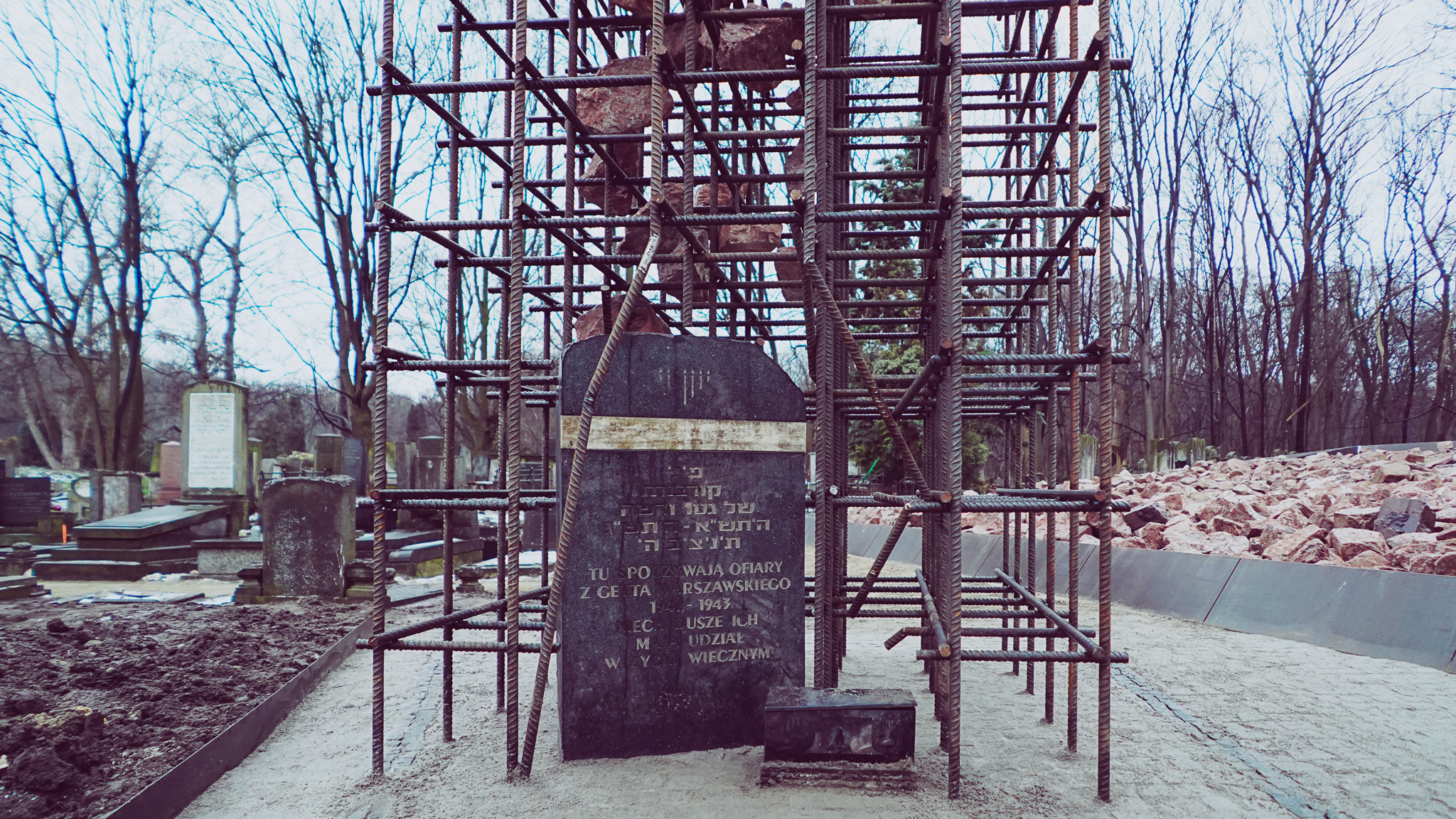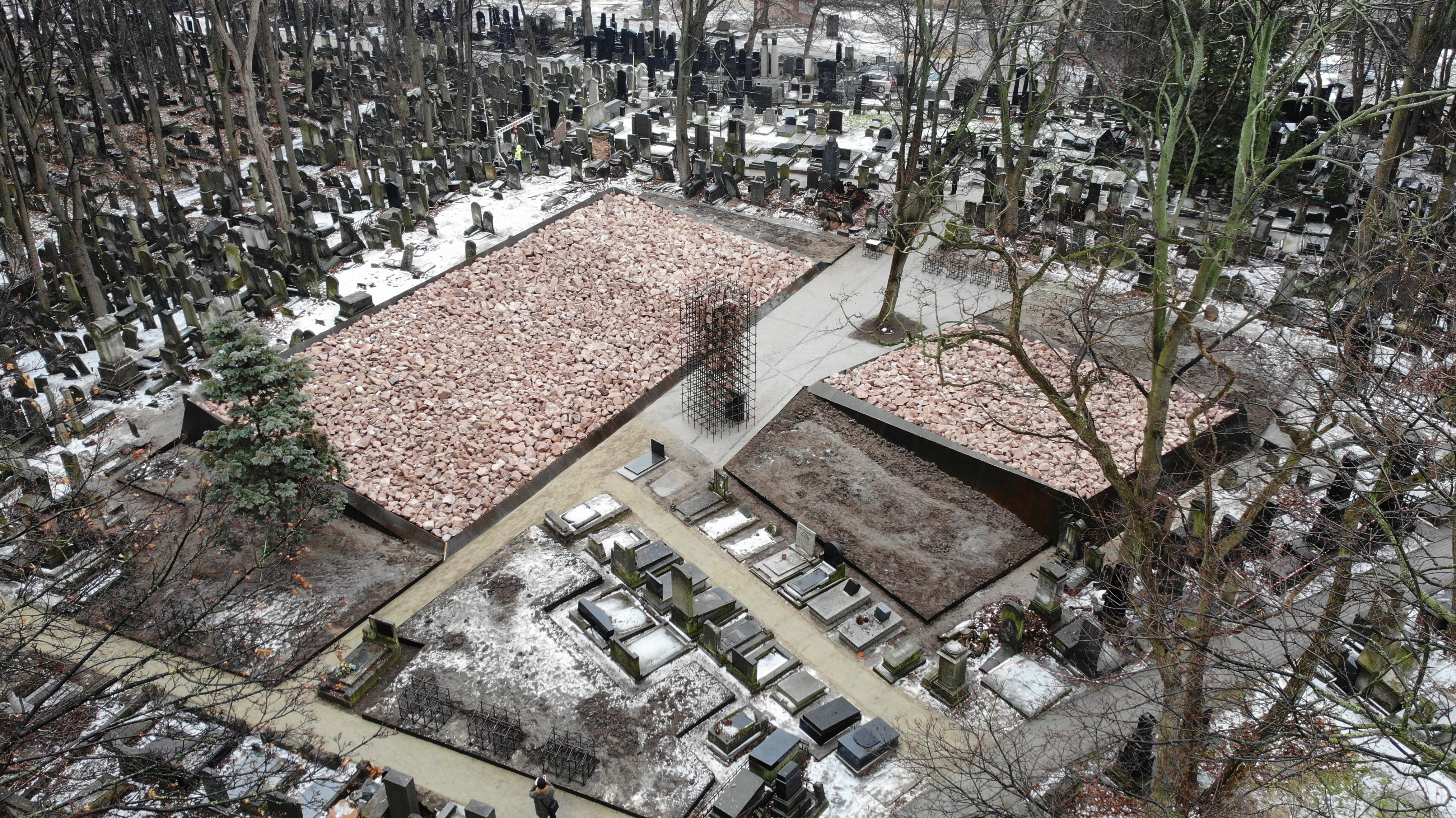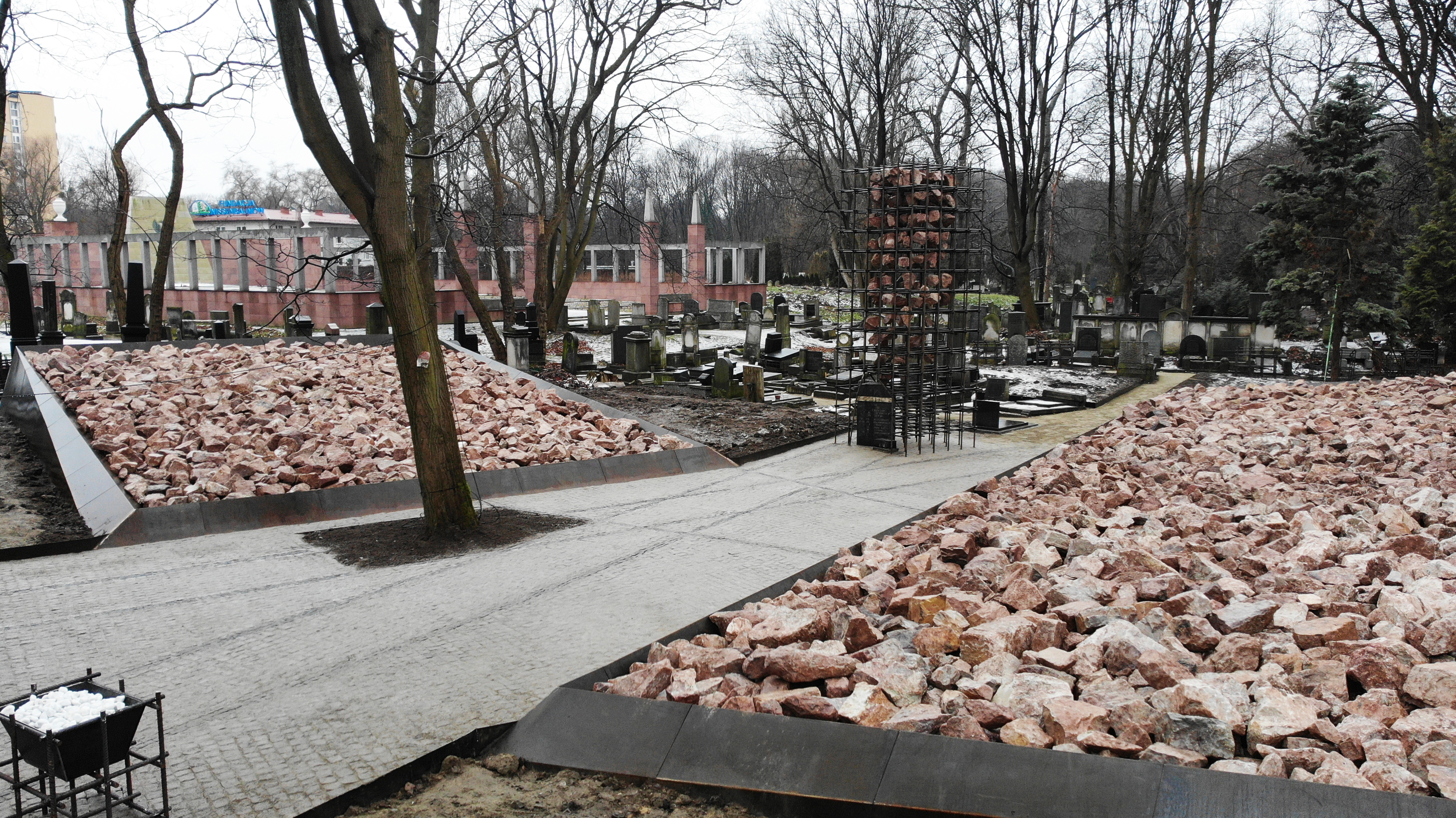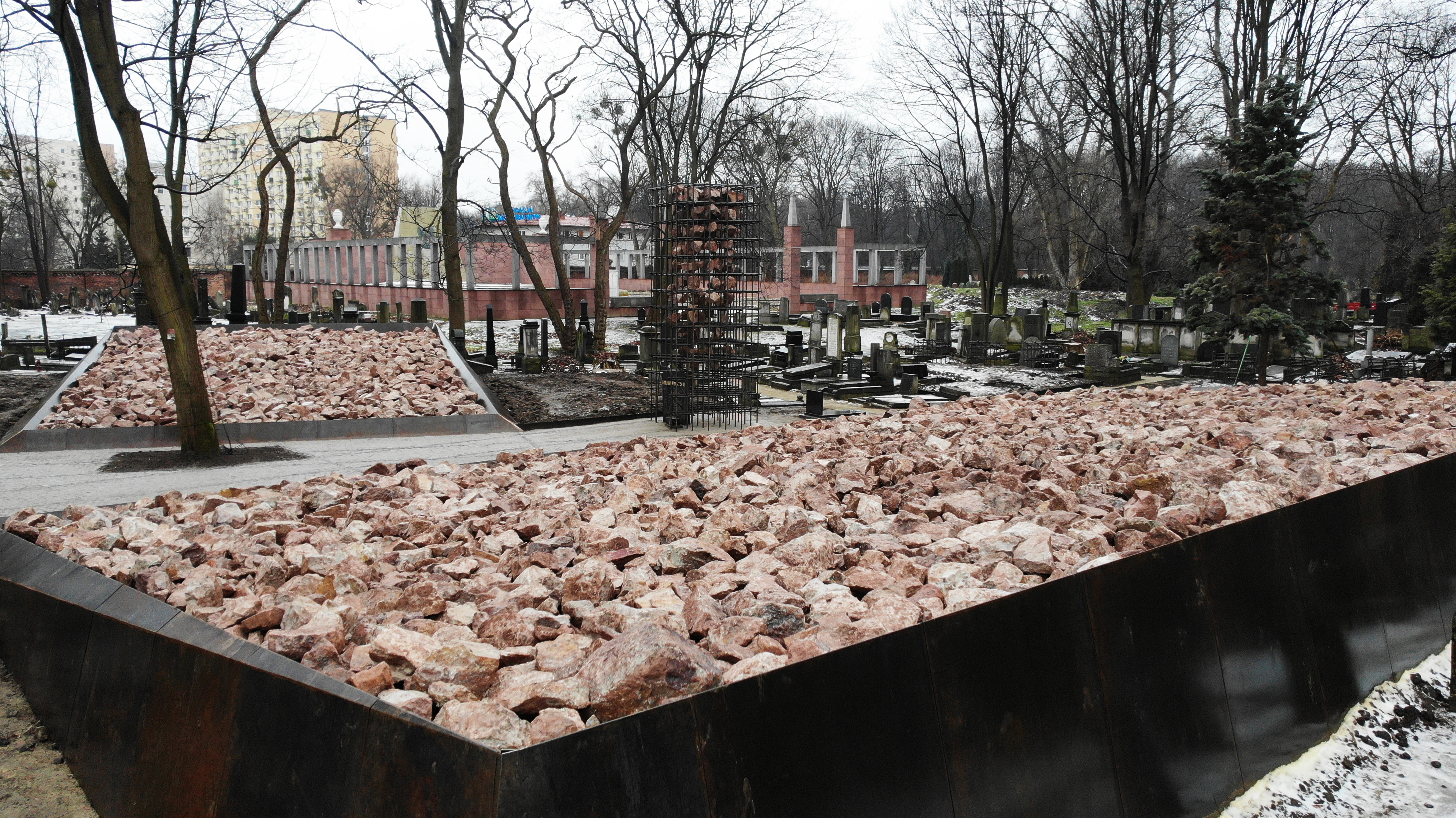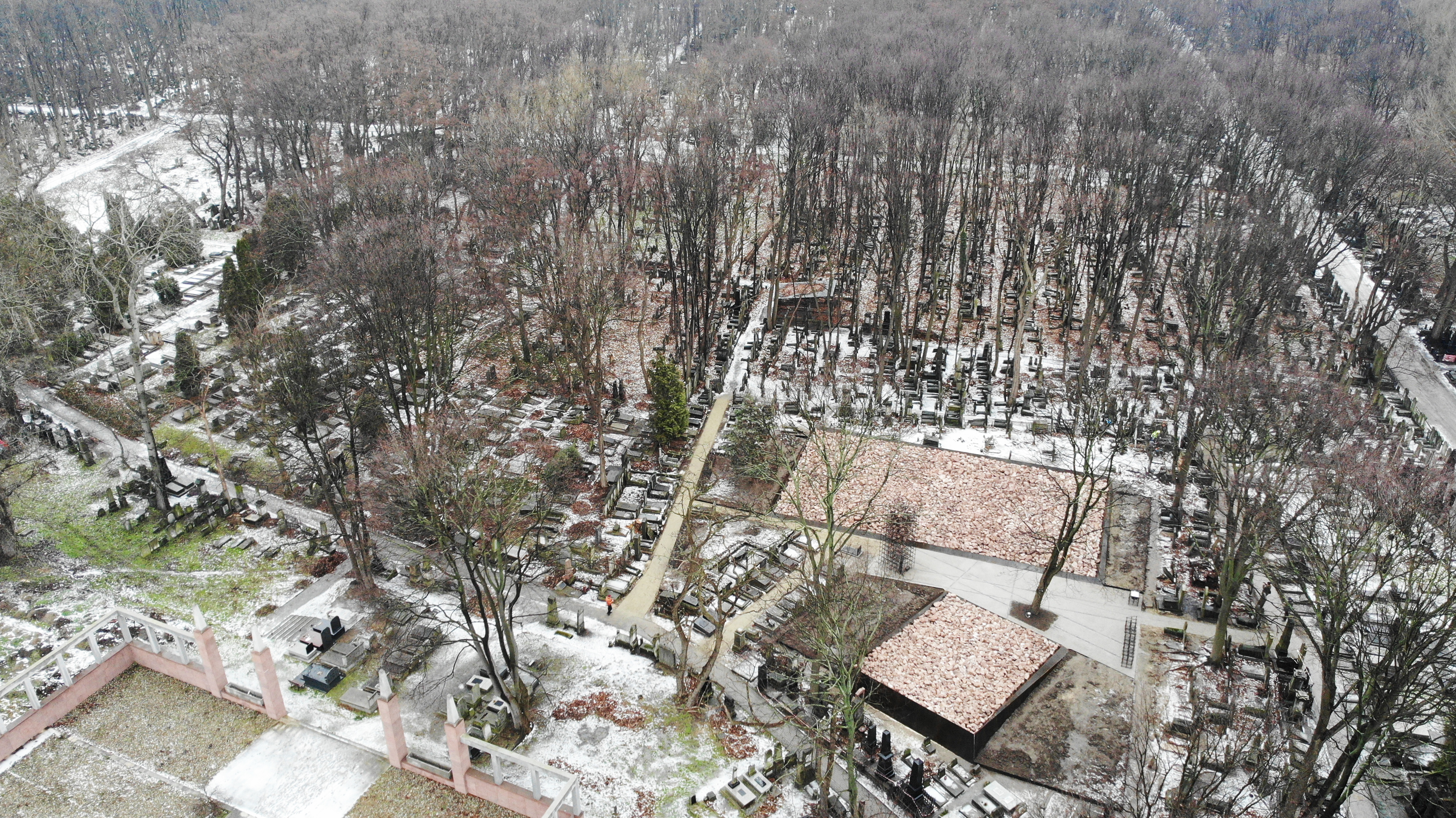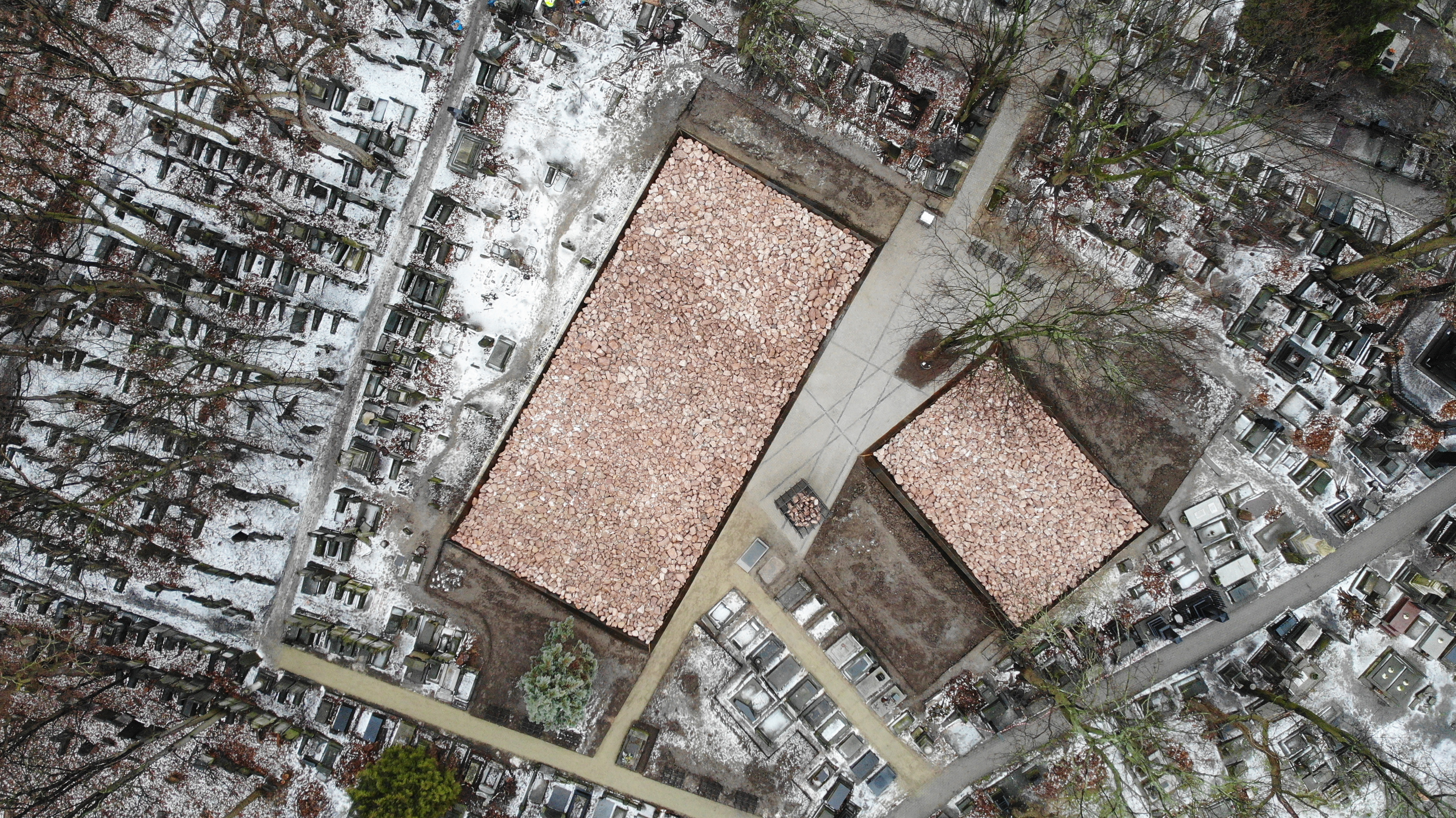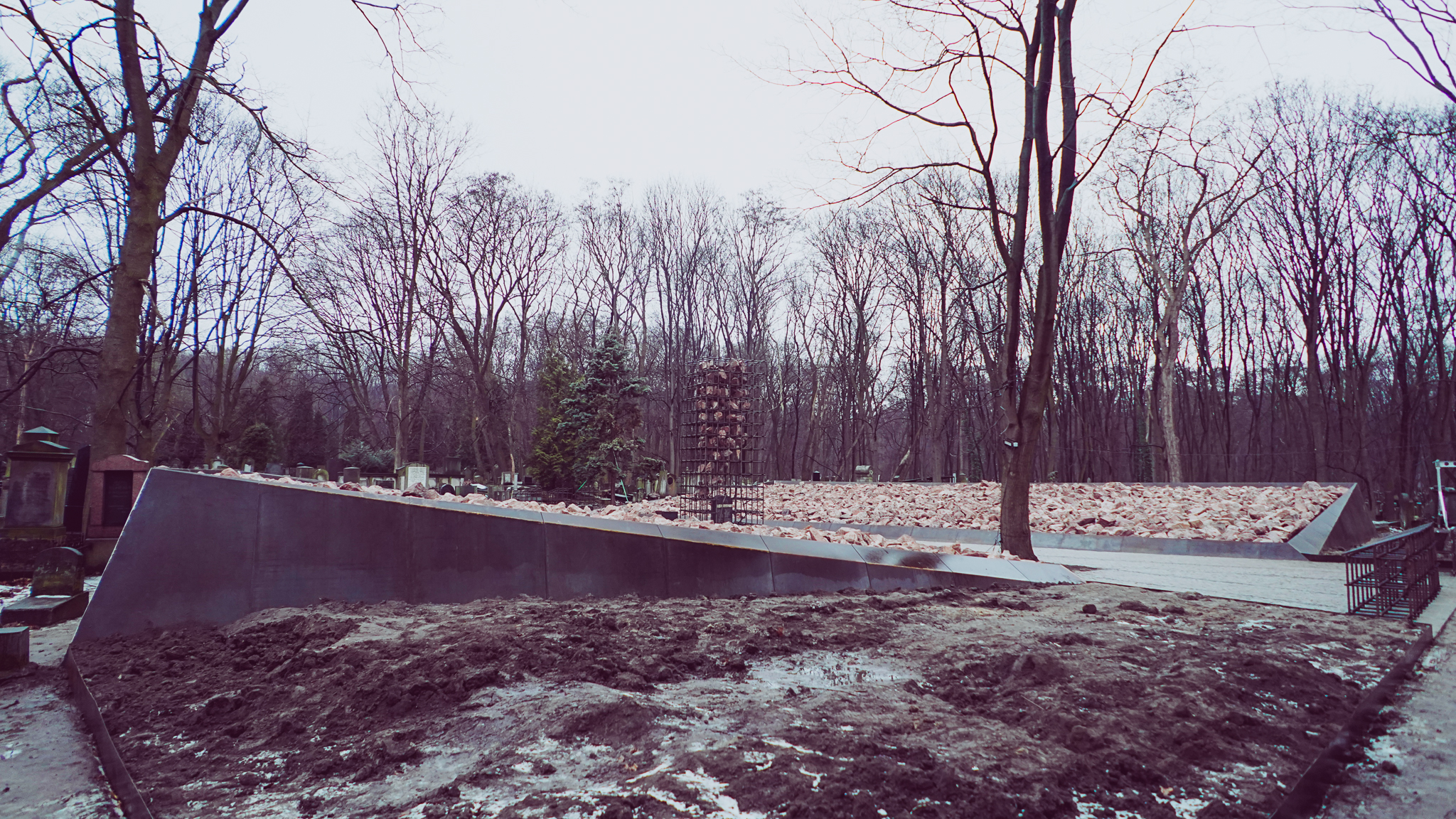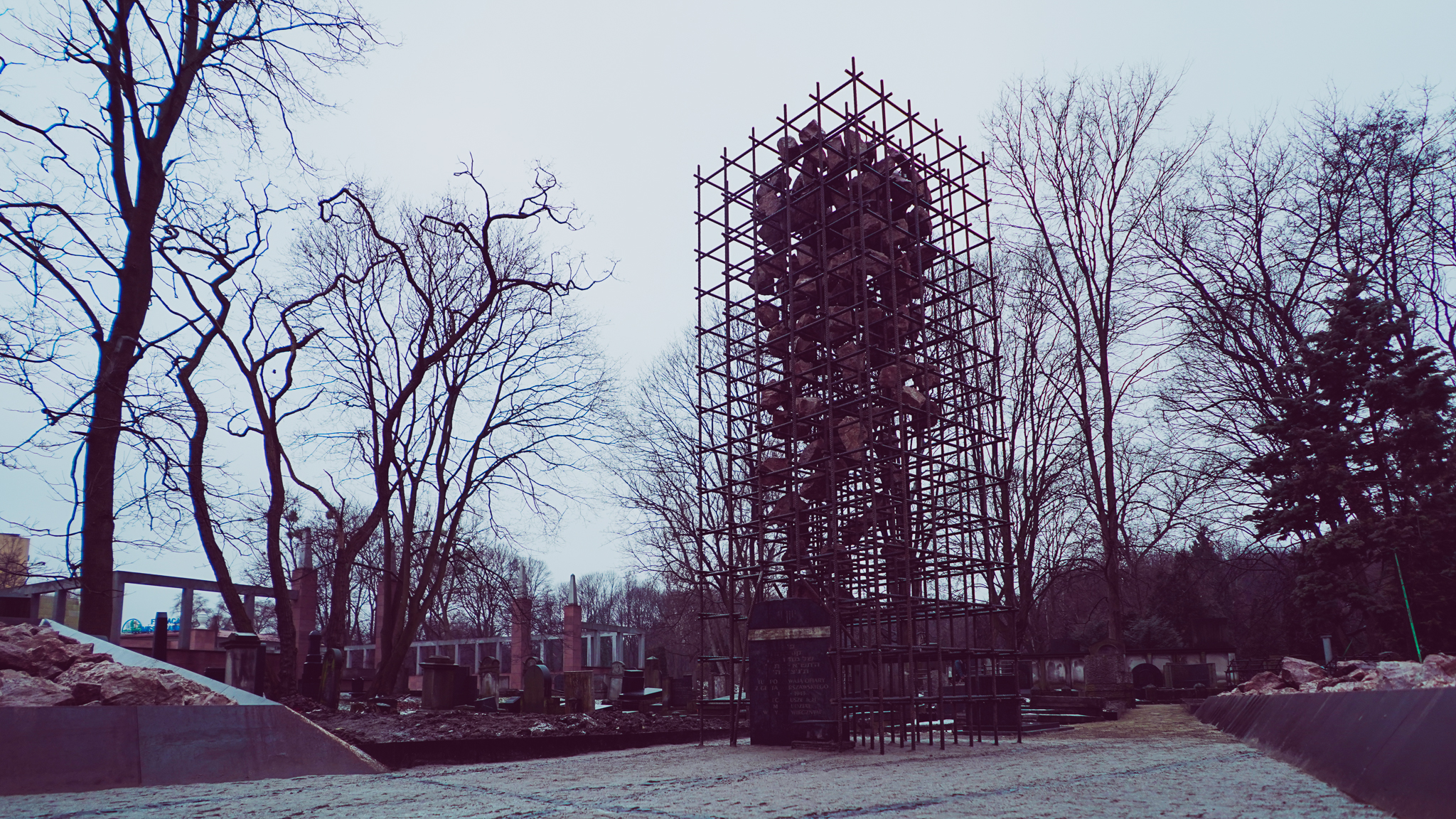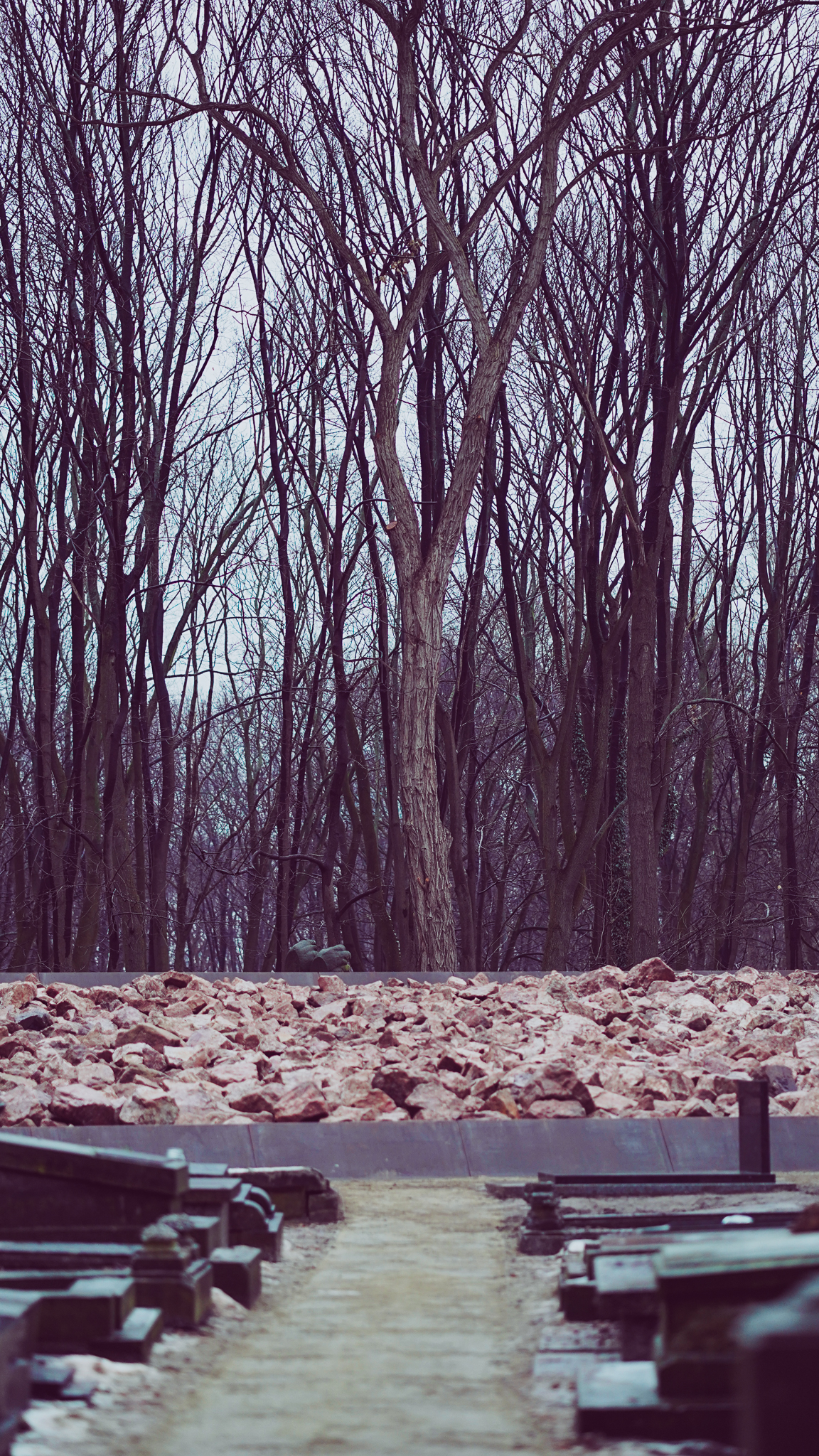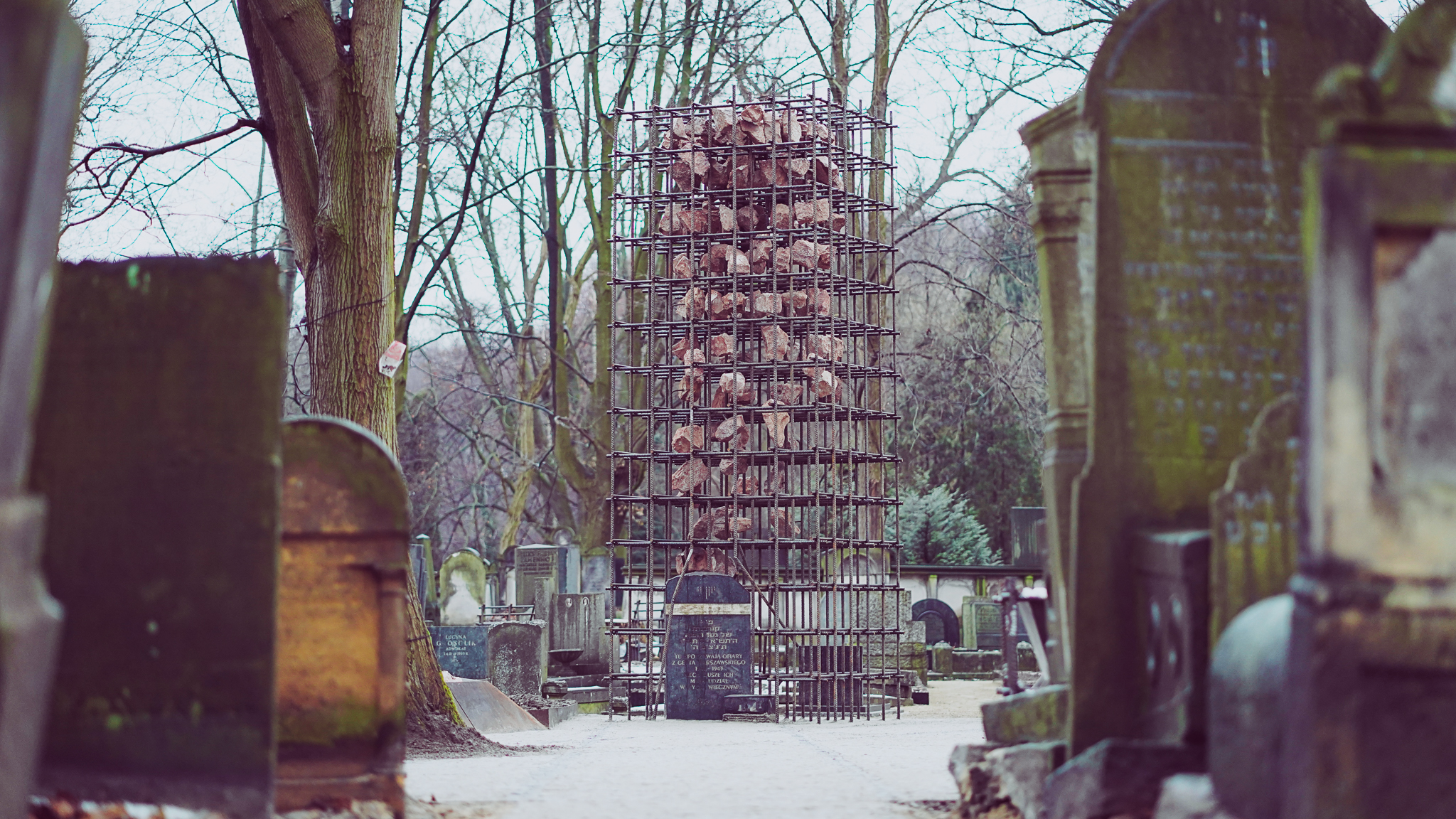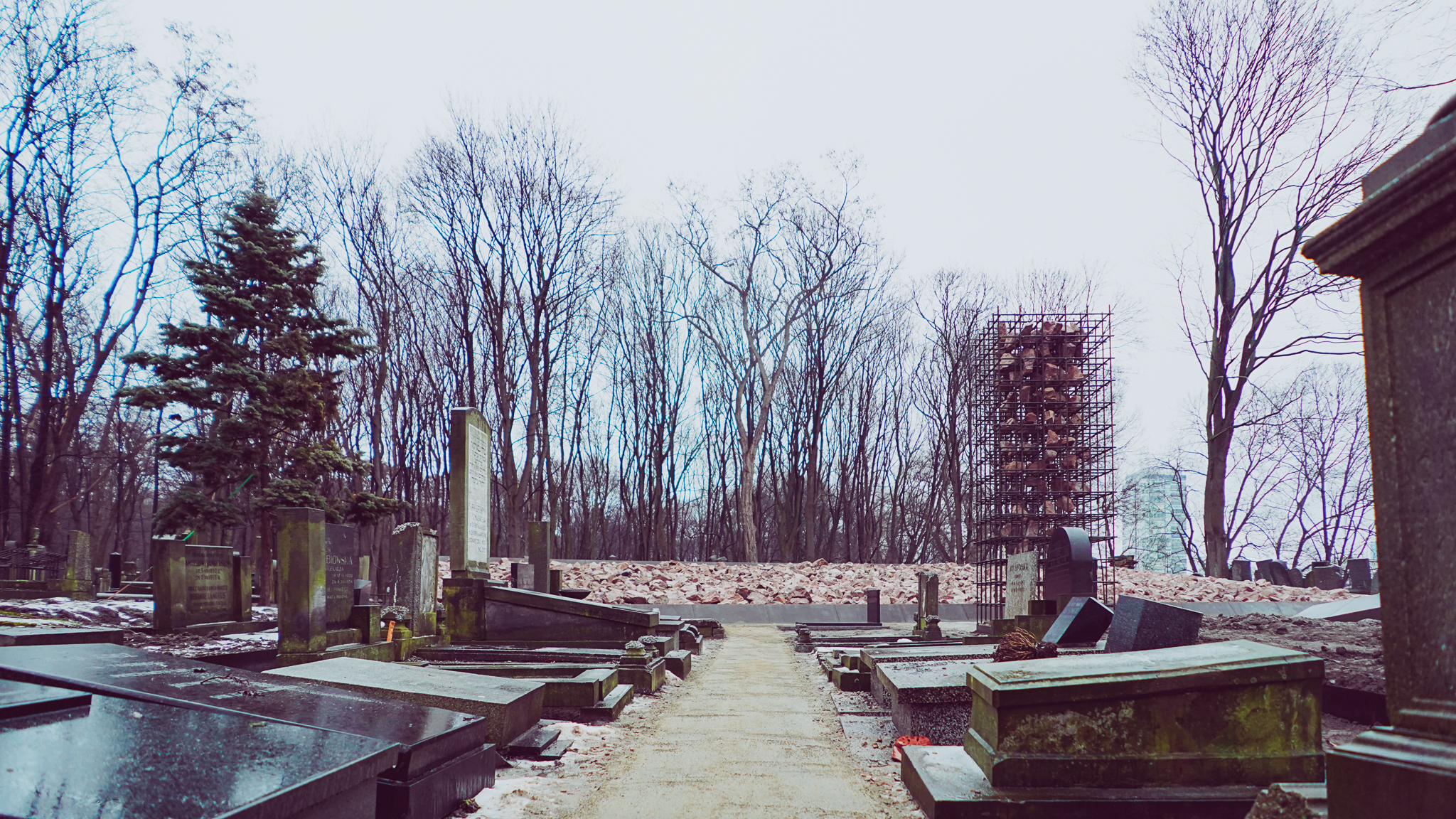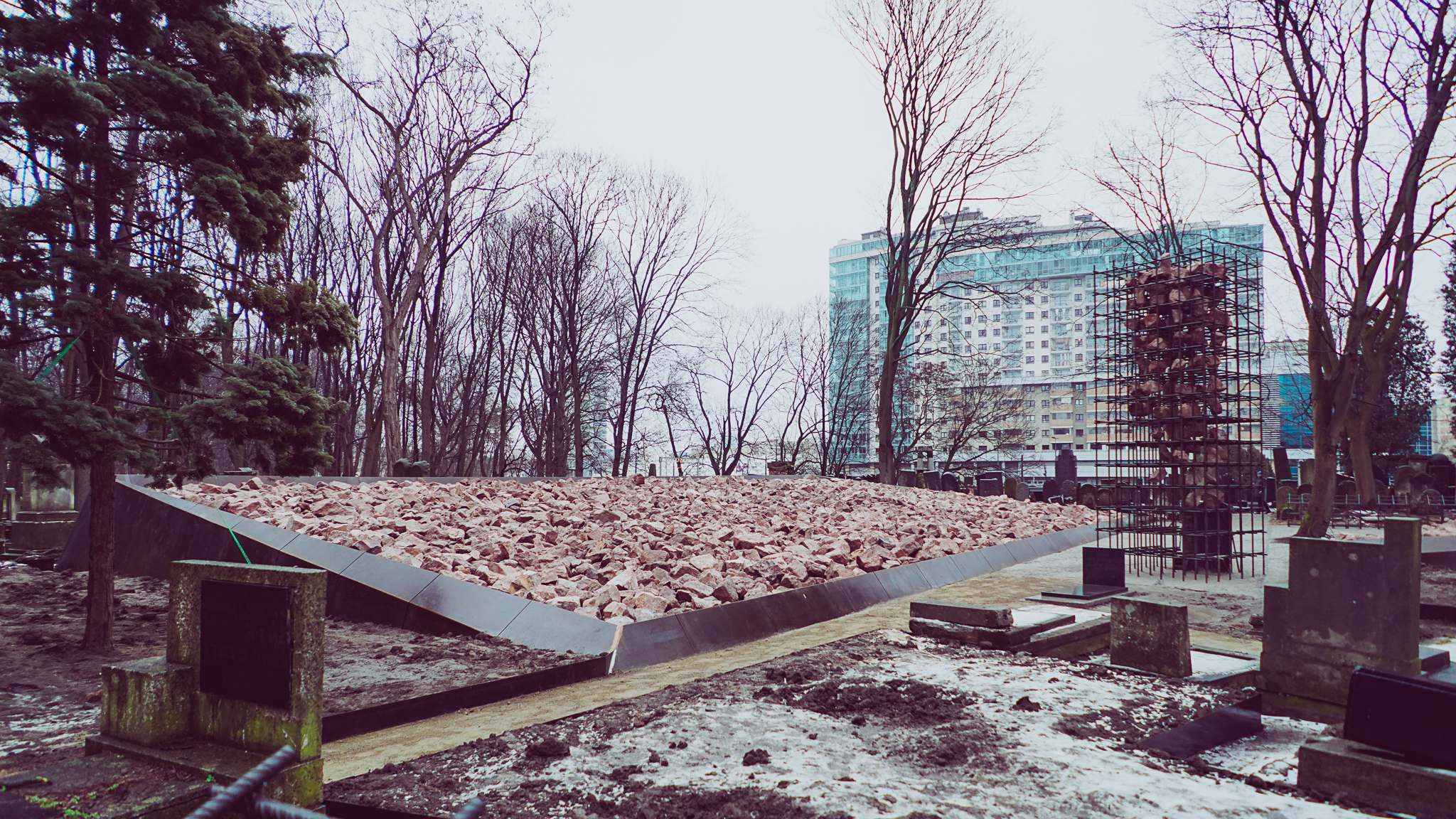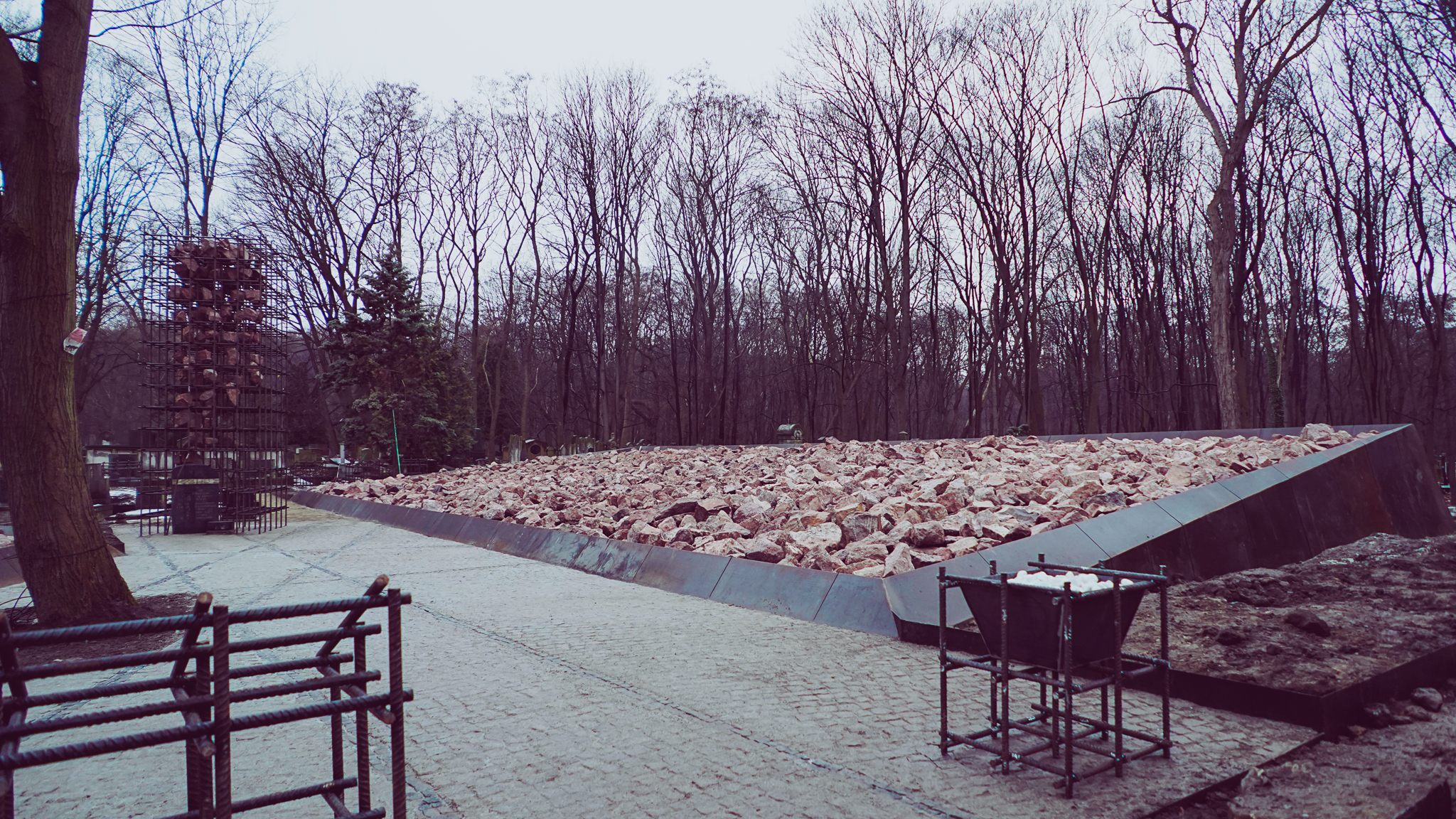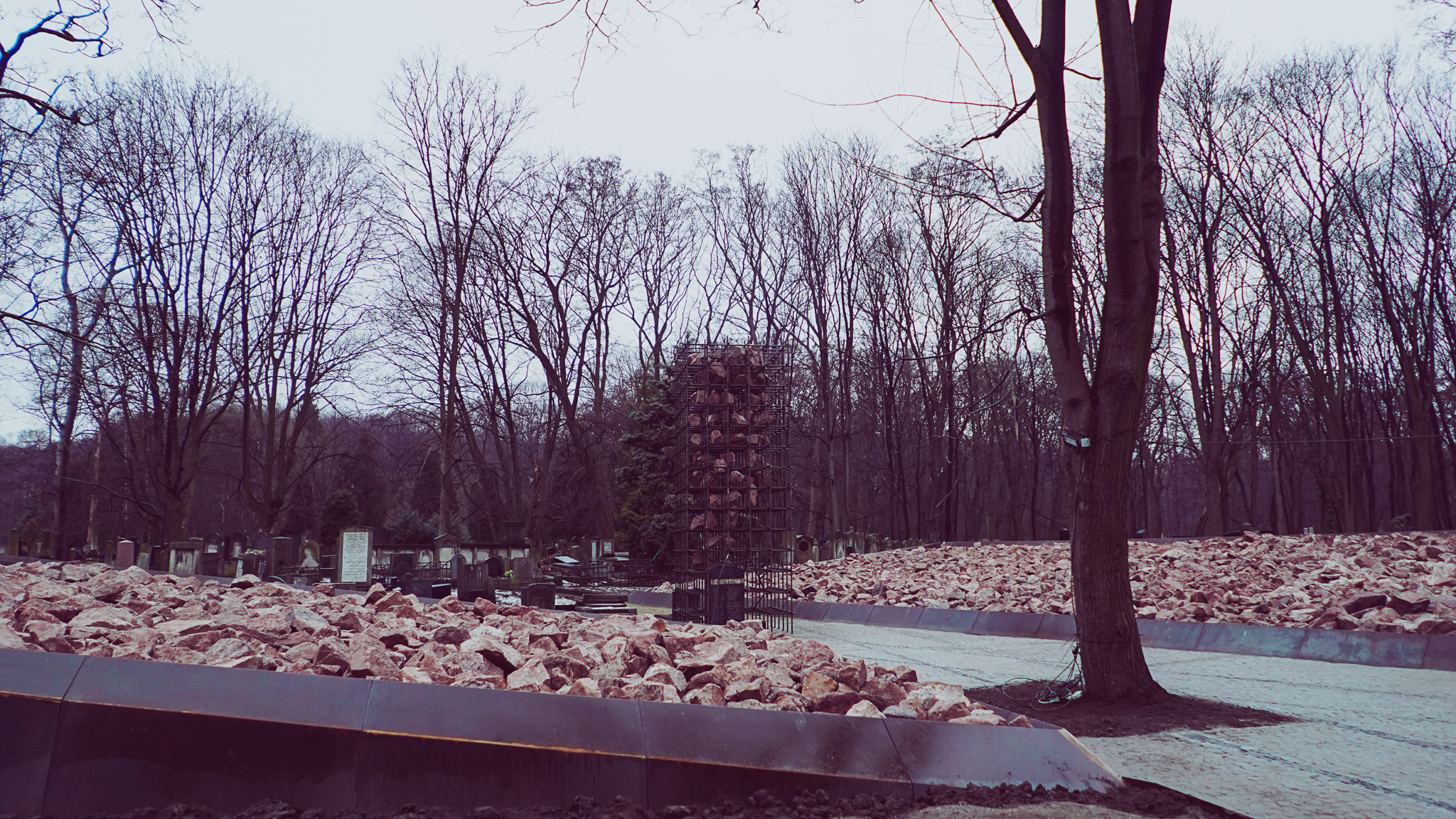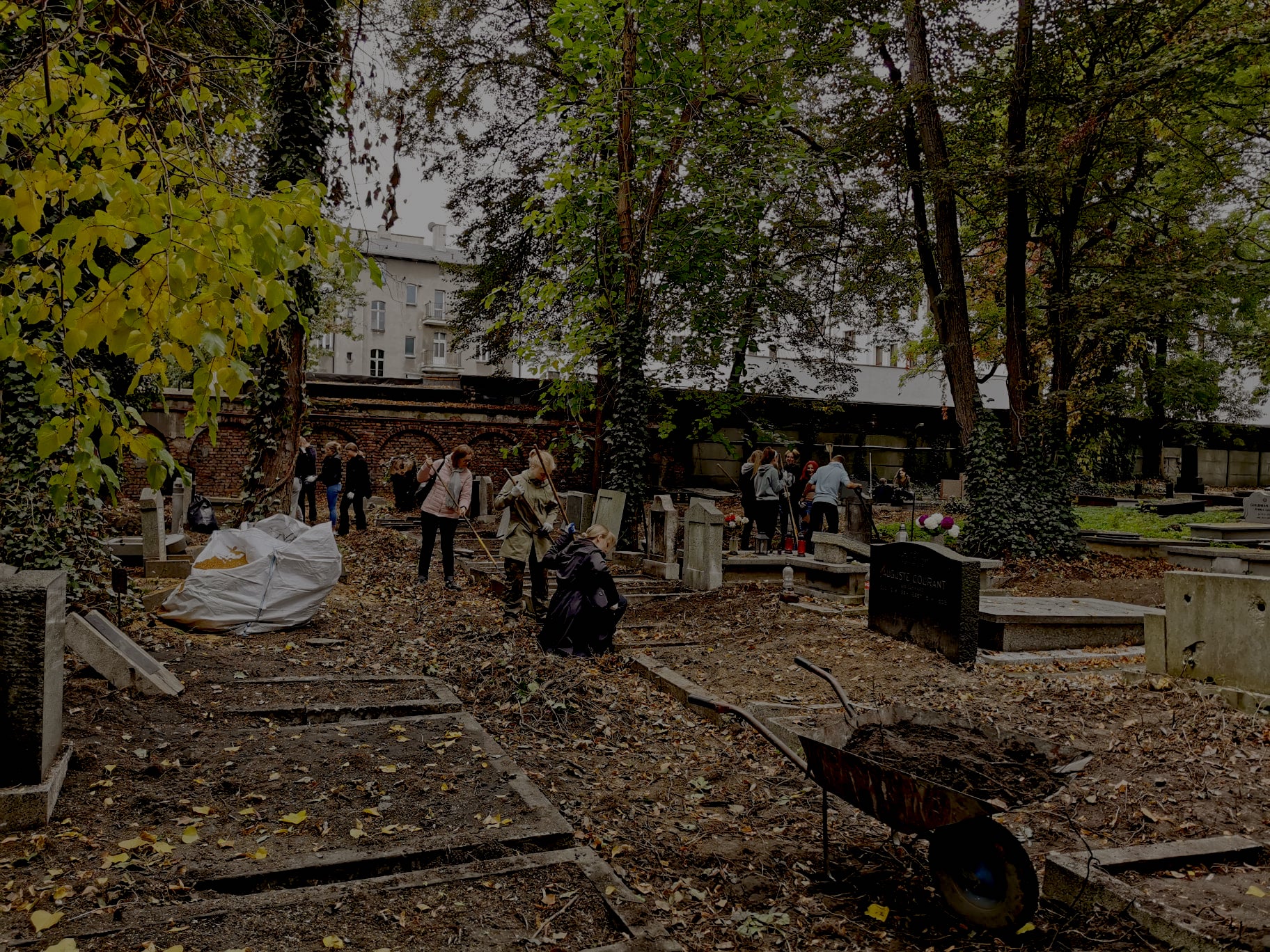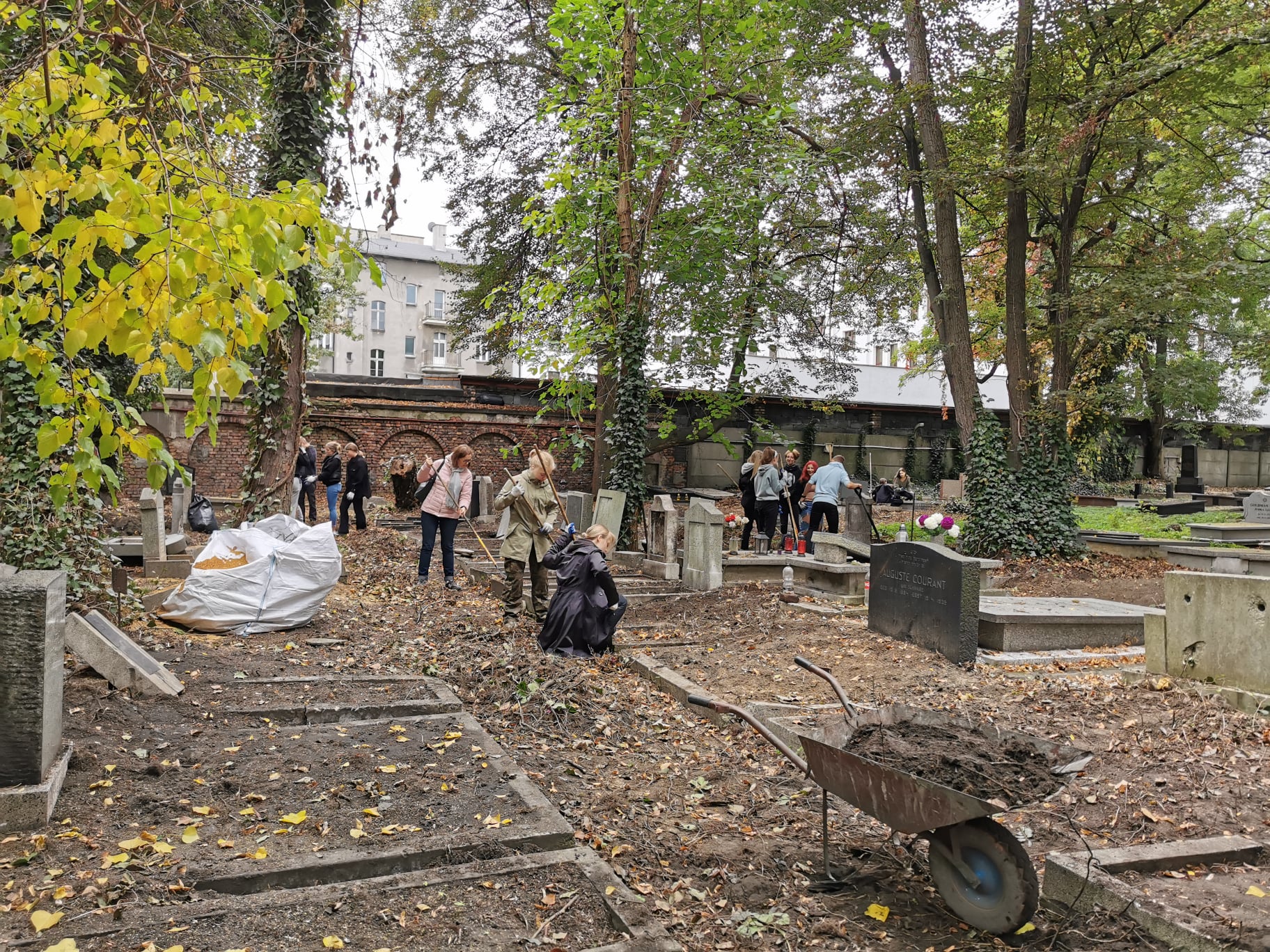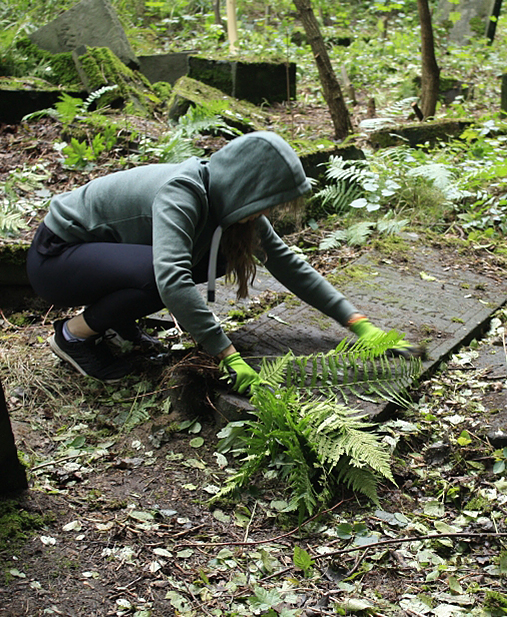Commemoration of one of the largest mass graves in Europe
At the Jewish cemetery at Okopowa Street in Warsaw, works have recently been completed to
commemorate Jews who died or were murdered in the streets of the Warsaw Ghetto and were buried in
one of the largest mass graves in Europe.
In the first months of the German occupation in Warsaw, Jews were still buried in individual graves in
accordance with Jewish tradition and law. Later, when dozens and hundreds of people died in the
Warsaw Ghetto every day, a central mass grave was established at the Jewish Cemetery. It is estimated
by scholars that the two pits measuring 10×10 and 10×20 meters and 8 meters deep became the grave
of several to several dozen thousand nameless victims of the Nazis.
– The murder of Jews in the Warsaw Ghetto during World War II caused an immense loss to the entire
global Jewish community and a great loss to Warsaw – to its spiritual life, tradition and culture – says
Michael Schudrich, Chief Rabbi of Poland. – In Judaism, the soul is the source of holiness, and the
body is a vessel that carries holiness within itself. According to the Jewish law, the human body
remains sacred until the day of resurrection. That is why commemorating thousands of dead Jews and
the possibility of praying in the exact place of their burial are of vital importance to us – adds Rabbi
Schudrich.
The boundaries of the mass grave
After the war, the mass grave at the Okopowa Jewish Cemetery was left as an empty, unmarked site.
– Mass graves in Warsaw are an overwhelming symbol of the end of the local Jewish community – says
Lesław Piszewski, Chairman of the Board of the Jewish Religious Community in Warsaw. – These are
the graves of people who died or were killed in the streets of the Warsaw Ghetto. Those who survived
were then mostly murdered during the Ghetto Uprising, between April 19 and May 16, 1943 or in the
gas chambers of Treblinka, adds Piszewski.
In the 1980s, the artists Hanna Szmalenberg and Władysław Klamerus commemorated the site by
creating a stone circle made of white marble boulders and a black stone slab with an inscription.
In 2021, Dr. Sebastian Różycki from the Department of Photogrammetry, Remote Sensing and Spatial
Information Systems of the Warsaw University of Technology determined the exact boundaries of the
grave. It was possible thanks to the research work carried out in the cemetery by the Cultural Heritage
Foundation in cooperation with the Jewish Historical Institute, as well as the analysis of aerial
photographs and photos from 1941-1942 kept at the JHI. The establishment of the boundaries resulted
in the commencement of archaeological and clean-up works under the supervision of the Rabbinical
Commission for Jewish Cemeteries in Poland. As a result, individual symbolic monuments that stood
on top of the mass grave, were moved to another part of the cemetery.
Commemoration
In the summer of 2021, the Board of the Jewish Religious Community in Warsaw and the Cultural
Heritage Foundation decided to commemorate the victims of the Shoah within the exact boundaries of
the mass grave. The monument was designed by a team of architects working at the Archiworks
company: Karol Dzik, Maciej Szpalerski and Krzysztof Matuszewski.
At the central point of the commemoration, between the two original pits, there is an openwork
monument with stones suspended in the air, arranged in the shape of a broken column – a symbol of an
interrupted life. Below there is the black stone slab that constituted the central point of the
commemoration effort in the 80s. The monument is the focal point of the memorial site where visitors
will be able to lay stones or light candles. The boundaries of the mass grave were marked with walls made of weathering steel, between which boulders and stones were placed to symbolize the thousands
of Jews murdered by the Nazis in the Warsaw Ghetto.
The commemoration does not interfere with the original layout of the cemetery and creates a
background for historical tombstones. Its size reflects the enormity of the mass grave.
– Mass graves at the Jewish cemetery are one of the most important places that testify to the tragic
history of our city and its inhabitants – says Michał Laszczkowski, President of the Cultural Heritage
Foundation. – It is almost unimaginable that so many people are buried in such a small area. It is also
moving that time has erased the original boundaries of the graves and it was only last year, 75 years
after the war, that we were able to correctly delineate them and commemorate the Jews buried there –
adds Michał Laszczkowski.
The cost related to the creation of the commemoration was one million three hundred thousand zlotys
(around 320.000$). All works were financed with the funds of the Chancellery of the Prime Minister,
the Minister of Culture and National Heritage as part of the "War graves and cemeteries in the
country" program and the funds of the Jewish Community in Warsaw. Archaeological works, carried
out by the Wykop na Poziomie company were possible thanks to the funds of the Minister of Culture
and National Heritage and the Mazovian Voivodeship Conservation Office. All works related to the
commemoration were organized by the Cultural Heritage Foundation, which has been carrying out
conservation and cleaning works at the Jewish cemetery in Okopowa since 2017. The entire project
and its execution were closely supervised by the Rabbinic Commission for Jewish Cemeteries in
Poland by the Union of Jewish Religious Communities in Poland. In the Spring of 2022, the
commemoration will be enriched with educational boards, as well as three thousand six hundred
common periwinkle seedlings, which will cover the area around the monument.
Link to the movie: HERE
